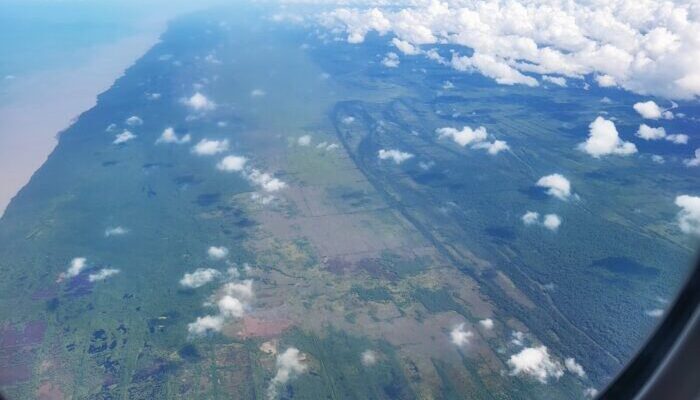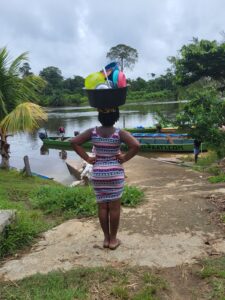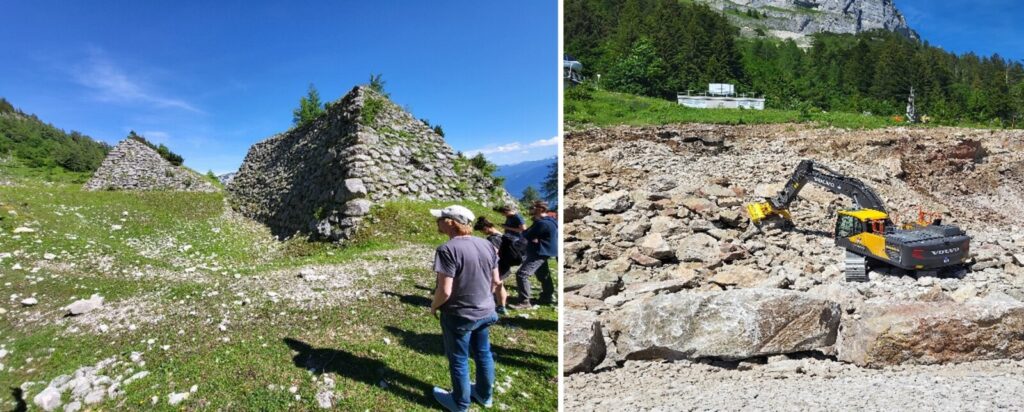
In January 2023, I visited the Amazon Forest in Suriname. During my visit, I met indigenous people known as the Saramaccers, a Maroon tribe residing in the heart of the Amazon Forest. I found it fascinating that the Saramaccers consider themselves an integral part of nature. Their motto is ‘If you respect nature, nature will be your friend and stand by you’.
Nature extends a helping hand to humans more than humans extend to nature. In fact, the natural environment communicates with us, revealing its behaviours through winds, storms, volcanoes, earthquakes, and more. These are the Earth’s physical processes, which humans often label natural hazards [1]. The UN Office for Disaster Risk Reduction (UNDRR) provides information to learn more about disaster terminology, including terms such as resilience, exposure, vulnerability and the disaster cycle.

The Saramaccers, a Maroon tribe residing in the heart of the Amazon Forest in Suriname, living in harmony with their surrounding nature (photo credit: Hedieh Soltanpour)
Nature seems to say, “I possess energies that require release. To achieve this, I must shake things up, twist and break (as seen in earthquakes where rocks along faults break), sneeze (referring to extreme winds, storms and hurricanes causing storm surges, and other compound hazards), cry (in the form of rainfall and floods), and get angry, roaring with fire (referring to volcanic eruptions)”. Occasionally, nature experiences a myriad of emotions simultaneously, resulting in a cascade of multiple hazards [2, 3].
“Now, you humans, my guests, who have spread your life’s foundation on me for many years, I request you to know me. Understand me deeply, identify and characterise those twisting, breaking, sneezing, and roaring points. These reactions are the most hazardous areas for human habitation. Stay away from them as much as possible. Individuals who reside in these vulnerable areas are at greater risk when it comes to experiencing my natural behaviours”.
“Remember, my energies are not solely to challenge you but also to provide for you. This depends on your own efforts to discover me. Alongside all my natural behaviours, I also provide you with facilities to overcome my natural processes”.
If you respect nature, nature will be your friend and stand by you (the Saramaccers)
A good example comes from modern human roots. For centuries, indigenous peoples have recognised ecosystems’ fundamental role in supporting human well-being and this wisdom has been passed down through their traditional knowledge systems [4]. At this stage, the natural environment rushes to our aid and helps us immensely with the materials it provides to remain safe from those potentially hazardous behaviours, increasing resilience. This is what we call nature-based solutions nowadays.
For example, consider a small-scale scenario: if you place a piece of paper against the wind, the wind will take it away. In this situation, you can use a nearby rock that nature has provided you with and prevent the paper from being taken away by the wind. This simple example shows that humans must learn to adapt to their environment, finding the solution in nature. In the broader context, with global warming changing our climate, urban environments are increasingly vulnerable to extreme rainfall, floods, and prolonged periods of drought.
Embracing simple nature-based solutions holds multiple potential benefits towards adapting to climate change. For instance, trees can play a remarkable role as natural carbon capture and storage machines [5] while contributing to flood protection. Sand and rock can also protect against floods, and snow- and landslides. Constructing protective dykes and dams is an effective strategy, which depicts a real example of cost-effective and nature-based solution against natural hazards in Styria, Austria. Last but not least, natural resources like gas, charcoal, and wood come to our aid to combat cold and ice. Hence, humans can harness natural hazards with the assistance of nature itself.

Constructing stone dams to prevent avalanche damage using the surrounding materials in Styria, Austria. Considering the presence of two potential starting points for snow avalanches in the area, two rows of catching dams were constructed. The first row (left) is closer to the release point of the avalanche to effectively trap the avalanche energy behind the stone dams. The second row (right) is designed to anticipate a potentially larger avalanche. Both cases used local stones from the surrounding area, constituting a cost-effective nature-based solution for enhanced protection (photo credit: Hedieh Soltanpour)
Could we argue that nature benefits humans more than humans benefit nature? However, it would not be inaccurate if nature were to respond by urging us to cease causing harm to it, let alone expecting help from us. The relationship between humans and nature is one of interdependence, where nature provides abundantly for humanity, and in turn, humans must strive to comprehend, respect, and protect nature’s delicate balance for the benefit of all.
References
- Keller, E. A., & DeVecchio, D. E. (2019). Natural hazards: earth’s processes as hazards, disasters, and catastrophes. Routledge. https://doi.org/10.4324/9781315164298
- Gill, J. C., & Malamud, B. D. (2014). Reviewing and visualizing the interactions of natural hazards. Reviews of Geophysics, 52(4), 680-722. https://doi.org/10.1002/2013RG000445
- Gill, J. C., & Malamud, B. D. (2016). Hazard interactions and interaction networks (cascades) within multi-hazard methodologies. Earth System Dynamics, 7(3), 659-679. https://doi.org/10.5194/esd-7-659-2016
- Cohen-Shacham, E., Walters, G., Janzen, C., & Maginnis, S. (2016). Nature-based solutions to address global societal challenges. IUCN: Gland, Switzerland, 97, 2016-2036. http://dx.doi.org/10.2305/IUCN.CH.2016.13.en
- Stevens, N., and Bond, W. J. (2023). A trillion trees: carbon capture or fuelling fires?. Trends in Ecology & Evolution. https://doi.org/10.1016/j.tree.2023.09.015
Post edited by Asimina Voskaki and Paulo Hader




Dedi Purwana
I love this article!
Asimina Voskaki
Thank you very much for your feedback!